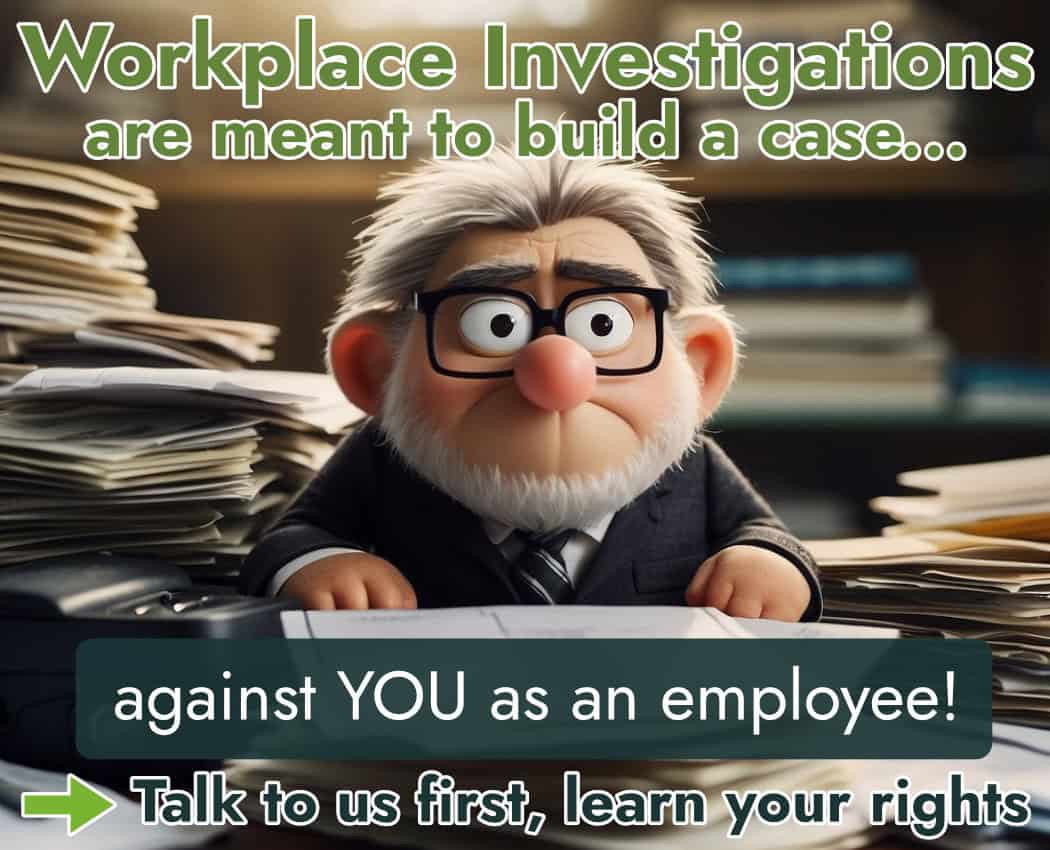
Occupational health and safety issues between employees and their employers can become highly contentious unless both parties understand their rights and obligations.
Legal assistance from an experienced occupational health and safety lawyer can help to prevent such issues from escalating into adversarial situations.
Our lawyers understand workplace health and safety regulations. We have helped both employees and employers protect and assert their rights and fulfill their responsibilities,
Whether you have a health and safety or workplace compliance issue, speak to the lawyers at Taylor Janis LLP for legal advice.
Learn More → Can My Employer Fire Me for Raising a Safety Issue at Work in BC?
What is the law that governs workplace safety in BC?
The Workers Compensation Act is a key piece of legislation governing occupational health and safety matters in British Columbia.
Additionally, the Occupational Health and Safety Regulation was developed by WorkSafeBC to ensure worker safety and prevent accidents and injuries at work.
Regardless of the business size or type, every employer in B.C. has the responsibility to keep workers safe in the workplace by following the requirements set out by the provincial government and the Regulation.
The laws lay out the general responsibilities of employers, workers and supervisors and form the foundation for workplace health and safety responsibilities in the province.
Some businesses and industries that must deal with specific hazards, such as construction, oil and gas, forestry and agriculture receive special attention in the legislation.
What are the three basic health and safety rights of workers in BC?
In British Columbia, all workers have the following three rights:
- The right to know about health and safety matters.
- The right to participate in decisions that could affect their health and safety.
- The right to refuse work that could affect their health and safety and that of others.
WHAT IS MEANT BY THE “RIGHT TO KNOW” IN THE OCCUPATIONAL HEALTH AND SAFETY REGULATION?
Within the Occupational Health and Safety Regulation is the right of the employee “to know about health and safety matters”.
This means that employees have the right to be informed by the employer of known or likely hazards in the workplace. They must also receive the necessary information, instructions, education, training, and supervision to protect their health and safety before the work begins.
Examples of acceptable ways to inform employees might be:
- Verbal instructions from a supervisor or external provider
- Instructions in writing
- Product labels
- Safety data sheets
- Safe work procedures
- Codes of practice
- Training
Information/instruction should be available in multiple languages (if appropriate) and even in braille, sign language or large print if necessary.
Information should cover the following key areas:
- Workplace hazards
- The process for reporting hazardous conditions
- Safe work policies, procedures and codes of practice
- Emergency procedures, including emergency evacuation, first aid, incident reporting and investigation procedures
The Workplace Hazardous Materials Information System may be used to inform workers of many types of chemical and biological material hazards.
WHAT IS MEANT BY THE “RIGHT TO PARTICIPATE”?
The second health and safety right of workers in B.C. is known as the “right to participate”.
This refers to the right of a worker to have input into the steps taken by the employer to ensure health and safety in the workplace.
For instance, workers might contribute in the following ways:
- Become a member of the health and safety committee (if required).
- Become a health and safety representative for the workplace.
- Report concerns over a particular matter that could harm the health and safety of workers.
- Make suggestions to the committee or employer on how to enhance workplace health and safety.
WHAT IS MEANT BY THE “RIGHT TO REFUSE”?
The third health and safety right of workers in B.C. is known as the “right to refuse”.
This refers to refusing to work — and the right is usually exercised after a failure to address one (or both) of the first two health and safety rights of workers.
Most workplace health and safety situations can be resolved without employees having to exercise this right. The legal ramifications can be significant so it’s normally best to discuss your concerns with a workplace lawyer before threatening to take legal action against an employer.
You are within your rights not to work if it risks your health and safety is compromised but try to discuss ways of resolving the problem with your employer first.
What are signs that your workplace may be unsafe?
Employees should be able to trust their employers to provide a safe workplace but that’s not always the case and it’s important to remain vigilant.
In particular, the following should raise red flags:
- Other workers have been injured on the job
- A lack of proper occupational health and safety training
- A lack of direct supervision that compromises safety
- Unlabeled containers of hazardous materials
- Unguarded, broken or faulty machinery
- Regular slippery floors or a dirty workplace
- Poor electrical wiring that is not fixed after being reported
- Cost-cutting measures that compromise safety
What to do if your workplace is unsafe
Take the following steps if, as an employee, you observe that your workplace is unsafe:
- Stop work and report the unsafe condition/procedure
After you stop work, be sure to report the unsafe condition to your employer or supervisor. This will obligate the employer to investigate and fix the matter.
Note: if your employer feels that the work can be done safely by another person, that person must receive notice in writing detailing the reported unsafe condition, reasons why the task would not create an undue hazard and the worker’s right to refuse the work.
- Escalate the issue
If the matter remains unresolved after you’ve reported it, you and your employer (or supervisor) must investigate the matter in the presence of either a worker representative of the joint health and safety committee, a worker chosen by your trade union or any other worker you select.
- Notify WorkSafeBC or a suitable employment lawyer
If the matter remains unresolved, both you and the supervisor/employer must contact WorkSafeBC and a prevention officer will investigate the matter.
At that stage, you may also wish to contact a Taylor Janis LLP employment lawyer.
The sooner you can speak to us, the better, as there is a process that must be followed in order for you to preserve your claim against your employer.
Book A Consultation
At Taylor Janis LLP, we have the skills, knowledge, and expertise to handle all of your employment & labour law needs.

Our Kamloops intake staff are standing by to help you. Call 778-600-1599 or contact us online for general inquiries.
We also have a dedicated intake form to help you get the ball rolling. Our intake team will review your specific case and advise you on the next steps to take as well as what to expect moving forward.
Our Kamloops office is open 8:30 a.m.—4:30 p.m., Mon—Fri.


Tanya Maas
WORKPLACE LAWYER
Tanya has extensive experience in issues relating to wrongful dismissal, notice periods, human rights and workplace investigations. She believes that clients deserve relentless protection of their legal interests within legal and ethical bounds and an aggressive approach to litigation.
PRIVACY NOTICE: Any information you provide to our office — whether your personal information or employment/employer details — will be treated as strictly confidential and will not be disclosed to your employer or to any other third party. So, please be reassured that you can talk openly to our capable Intake Paralegals worry free. Fill out an Online Inquiry or call us now, your information will be in safe and helping hands.
The Legal Review Process by Taylor Janis Workplace Law
- Taylor Janis strives for high-quality, legally verified content.
- Content is meticulously researched and reviewed by our legal writers/proofers.
- Details are sourced from trusted legal sources like the Employment Standards Code.
- Each article is edited for accuracy, clarity, and relevance.
- If you find any incorrect information or discrepancies in legal facts, we kindly ask that you contact us with a correction to ensure accuracy.


